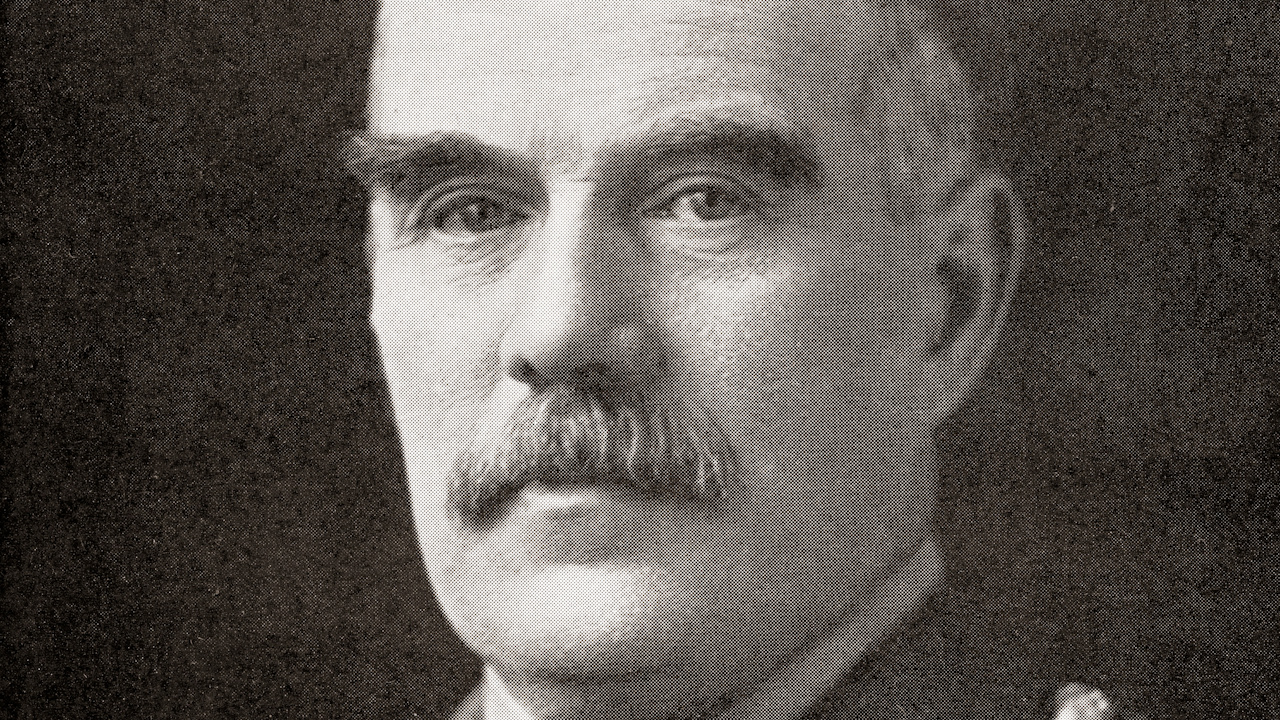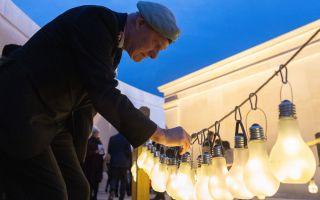
The unbelievable career of the only British Army soldier to hold every rank

Sir William Robert Robertson is the only person in the history of the British Army to have held every rank between private and field marshal in his military career.
Born in 1860 to a Lincolnshire family, Robertson began as a humble footman but decided against a life of servitude and pursued a career in the Army.
This decision would send him on a life path that would bring him into contact with Winston Churchill, King George V, Field Marshal Douglas Haig, and Field Marshal Montgomery.
Forces News has detailed Sir William's remarkable rise through the ranks thanks to reports in the national archives and research from the National Army Museum on his extraordinary career.
Enlisting
In November 1877, William Robertson became an enlisted man with the 16th Lancers, despite his mother's disapproval, said the National Army Museum's Justin Saddington in a special talk on Sir William's life in 2011.
Life in the Army was difficult and at the time it was not viewed as an honourable profession by many. The army was poorly paid and offered few opportunities for common soldiers.
Corporal/ Sergeant
Despite initial difficulties, he began to climb up the ranks and excelled in sporting competitions which caught the eye of his superiors. He also became an instructor in musketry and signalling.
His understanding of the common soldier and desire to overcome his lowly background drove him to advance further into the ranks.
He was promoted to corporal in 1879 and the sergeant in 1882.
The young sergeant major
In 1885, at the age of 25, Sir William became the youngest sergeant major in his regiment.
A very noble achievement that many soldiers could only hope to aspire to, but his drive to improve was not yet satisfied.
Gaining the rank only strengthened his conviction to one day become an officer.
During this period, the British Army was undergoing sweeping reform and the purchase system – where higher-class figures were able to purchase commissions through money rather than merit – was abolished. This gave way to more opportunities for those from humble beginnings.
Sir William became obsessed with studying to acquire the understanding and knowledge required to join the officer corps, including becoming an expert on battle and tactics.
However, despite his knowledge, money remained an issue. Once he was offered a commission, he only took the promotion on the condition it came with a posting to India where the pay was higher, and the cost of living was lower.
Watch: Cleverest Man in the Army: The Life of FM Sir William Robertson by the National Army Museum.
Second lieutenant in India
Sir William became an officer in 1887 with the 3rd Dragoon Guards. Despite once being a young sergeant major, he was now a late entry for an officer.
Mr Saddington explained how despite a softer life being on offer in India, Sir William maintained his fitness and worked to make money during his posting. He also devoted himself to his work and became an accomplished swordsman and fencer.
In 1894, he was awarded Best Officer at Arms and that same year he married Mildred Palin, the daughter of Lieutenant General Charles Thomas Palin of the Indian Army.
Outside of his military achievements, he mastered six languages including Urdu, Hindi, Persian, Pashto, Punjabi, and Gurkhali which offered him a position and a raise in pay with the Army Intelligence Service on the North-West Frontier.
First action
In 1895, he took part in the Chitral Expedition on the North-West Frontier of India.
According to the National Army Museum, the fort in Chitral had been placed under siege in March of that year, and the British Army dispatched a force under surgeon Major George Robertson to oversee the transition of power in Chitral after the ruler at the time had been killed.
Mr Saddington explained that during a reconnaissance mission, Sir William was attacked by two of his own guides. Despite being shot at with a double-barrelled shotgun, he fought back against his attackers, wounding one of them and chasing away the other. The wounded attacker was later captured and executed.
For this action, he was awarded the Distinguished Service Order (DSO).
Captain
Upon his return from the Chitral Expedition, he was promoted to become Captain William Robertson.
This rank allowed him the opportunity to take the exam for the staff college, but the tests required him to learn either French or German.
His wife greatly assisted him in his studies. She would always be a great supporter of his career throughout his life.
In 1896, Sir William left India to become the first man from the ranks to gain entry into the Staff College.
His graduation was held on the eve of the Second Boer War in 1899.

Official roles and positions
In 1900, Sir William was named the head of the Foreign Section of the War Office Intelligence Department.
This post gave him a greater understanding of world politics, and he identified Germany as the biggest threat to Great Britain at the time, Mr Saddington explained. His prediction would be proved right 14 years later.
In 1905, he became Colonel Robertson, and in 1907, he became friends the future King George V.
Between 1910 and 1914, Sir William would enjoy a career high when he became the Commandant of the Staff College and the Director of Military Intelligence.
First World War/ Chief of the Imperial General Staff
Once war broke out against Germany in 1914, Sir William was commissioned as Quarter Master General to the British Expeditionary Force (BEF).
In his role, he was very successful in ensuring that his troops were provided with the necessary supplies. The urgency of war made his job far more practical instead of the red tape involved during a peacetime administration.
By 1915, he was Chief of Staff to Sir John French and was known for his careful handling of command and economic approach to supply and resources.
His career brought him close to Field Marshal Douglas Haig, who Sir William praised publicly but privately held reservations regarding his aggressive approach to war which he feared would result in the unnecessary loss of life.
By 1916, he had been made the Chief of the Imperial General Staff (CIGS), from which he served until 1918. As CIGS, he was committed to continuing the allied advance on the Western Front and prioritised it over other fronts.
However, his role was made difficult by his poor working relationship with David Lloyd George, the then Secretary of State for War, who believed that other theatres of operation should have been focused on.
Resignation
Sir William developed a feud with Lloyd George regarding differences in how the war should have been fought.
He maintained that Germany was the primary threat and that the Western Front should have been focused on above all others, while Mr George insisted on attention being given to other fronts.
In February 1918, the feud concluded with Sir William being forced to resign. The war ended shortly after, however, and his wish for the military to focus its attention on Germany was maintained.
He left the war as Chief of the Imperial General Staff with a reputation that was much higher than many of his peers who were seen as incompetent and as having a disregard for human life.
Following the end of his career as CIGS, he assumed command of the Billum troops on the Rhine in 1919 before being officially made a field marshal the next year.
Sir William Robert Robertson died at the age of 73 on 12 February 1933 and was buried at Brookwood Cemetery.

Ranks in order
- 1877 – Private
- 1879 – Corporal
- 1882 – Sergeant
- 1885 – Troop Sergeant Major
- 1887 – Lieutenant
- 1895 – Captain
- 1900 – Major
- 1903 – Colonel
- 1907 – Brigadier General
- 1910 – Major General
- 1914 – Quarter Master General
- 1914 – Lieutenant General
- 1920 – Field Marshal









